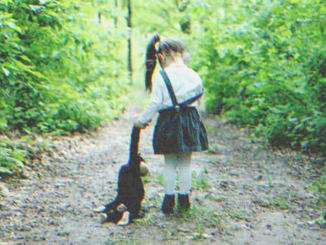Born on September 29, 1931, in Malmö, Sweden, Anita Ekberg grew up in a modest household as the sixth of eight children. Though her early years gave little hint of the international fame that awaited her, her striking beauty set her apart from an early age.

Her journey to stardom began in 1950 when she won the title of Miss Sweden. While she didn’t take home the Miss Universe crown, her participation in the pageant proved to be a turning point. The exposure brought her to Hollywood, where her captivating presence quickly caught the eye of industry insiders. This newfound recognition opened doors in modeling and acting, setting the stage for her entertainment career.
Breaking into Hollywood

Ekberg’s Hollywood debut came in the mid-1950s with supporting roles in films such as Blood Alley (1955), where she appeared alongside John Wayne and Lauren Bacall, and the comedy Artists and Models (1955), starring Dean Martin and Jerry Lewis. Her Nordic beauty and statuesque elegance earned her the nickname “The Iceberg,” reinforcing her image as a classic Hollywood bombshell. Popular media, including Playboy, frequently featured her, further cementing her status as a pop culture sensation.
La Dolce Vita and Global Stardom

However, it was her role in Federico Fellini’s La Dolce Vita (1960) that made her an international icon. Her portrayal of Sylvia, the enchanting yet elusive starlet, captured the essence of celebrity allure and mystery. The film’s most legendary moment—Ekberg wading through Rome’s Trevi Fountain in a flowing black gown—became one of the most enduring images in cinematic history.
Despite the worldwide recognition La Dolce Vita brought her, the role also led to typecasting, with many directors offering her parts that emphasized her glamorous persona. While this limited her opportunities for more diverse roles, Ekberg embraced the fame it afforded her, understanding the power of the image she had cultivated.
Life in Italy and Career Beyond Hollywood

Choosing to remain in Italy after her rise to stardom, Ekberg found greater creative freedom outside Hollywood’s constraints. She appeared in notable European films such as Boccaccio ’70 (1962), an anthology featuring works by Fellini and Vittorio De Sica, and 4 for Texas (1963), where she reunited with Dean Martin and Frank Sinatra. Though filmmakers often cast her in roles that leaned into her seductive image, she maintained a strong presence in European cinema, solidifying her legacy as a screen siren of her era.
I know what you’re thinking, but here’s the correct answer
Falling in love is a magical experience. It’s filled with excitement, butterflies, and a deep desire to make the best impression on the person we adore. In those early stages, we often tweak our behavior, carefully curating how we present ourselves. Something as simple as avoiding lollipops—fearing it may make us seem childish—symbolizes this phase of self-conscious love.
However, as a relationship matures, especially after marriage, things change. The need to impress fades, and the comfort of unconditional acceptance sets in. That once-hidden love for lollipops (or any quirky habit) resurfaces, representing a return to one’s true self.

Why Do We Hide Our True Selves in the Beginning?
When we first start dating, we unknowingly step into a highlight reel version of ourselves. We filter our habits, polish our words, and refine our actions to seem more attractive. But why?
1. The Desire to Impress
At the start of a relationship, we want to be seen in the best light. Whether it’s dressing perfectly, avoiding certain foods, or hiding silly habits, we make an effort to be someone our partner will admire.
2. Fear of Being Judged
We all have quirks—maybe you love collecting action figures, singing off-key in the shower, or eating candy like a child. But in the early stages, there’s a fear that revealing too much too soon could push the other person away.
Video : Only Girls will Understand ✔️
3. Society’s Expectations
Romantic relationships, especially new ones, are often shaped by social norms and expectations. Acting “mature” or “refined” seems like the right thing to do, even if it means suppressing natural instincts like enjoying a simple lollipop.
How Marriage Changes Everything
Marriage is not just about love; it’s about comfort, trust, and deep acceptance. Once you’ve committed to each other for life, the need to impress fades, and true personalities begin to shine.
1. The Comfort of Being Yourself
In a long-term relationship, you stop overthinking every action. You no longer worry if eating candy makes you seem childish, if watching cartoons is immature, or if wearing pajamas all day is unattractive. You embrace your true self because you know your partner loves you for who you are, not for the polished version you once presented.
2. Love Shifts from Attraction to Connection
Attraction may have sparked the relationship, but emotional connection sustains it. What makes a marriage strong is genuine companionship, built on shared experiences and authenticity. That means letting your guard down—whether that’s laughing at silly jokes, dancing like no one’s watching, or, yes, eating that lollipop with pride.
3. Unconditional Acceptance
Real love isn’t about impressing; it’s about accepting. Marriage teaches you that your quirks, habits, and imperfections are what make you unique—and those are often the things your partner grows to love the most.
The Evolution of Love: From Perfection to Authenticity

Every relationship goes through stages of transformation. The love that starts with perfection-seeking gradually matures into comfort-driven authenticity.
Stage 1: The “Best Behavior” Phase
In the beginning, you avoid anything that might make you seem less attractive or mature. You wear your best clothes, avoid messy foods, and pretend you don’t binge-watch cartoons.
Stage 2: The Gradual Unveiling
As you get more comfortable, little pieces of the real you start slipping out. Maybe you start eating lollipops in front of your partner, or you admit to loving cheesy romance novels. You test the waters to see if they still find you charming despite your quirks.
Stage 3: The Marriage Comfort Zone
By the time you’re married, there’s no need for facades. You eat what you want, laugh as loudly as you please, and fully embrace your unique personality. Your partner loves you for all of it—including the quirks you once tried to hide.
What This Teaches Us About True Love
1. You Deserve to Be Loved for Who You Are
If you feel the need to hide parts of yourself to keep someone interested, they may not be the right person for you. The right relationship allows you to be yourself from the start.
Video : Only Girls Understand What These Photos Mean..
2. Authenticity Leads to Deeper Connections
Love isn’t about pretending to be perfect—it’s about being real, raw, and vulnerable. The more you embrace your true self, the stronger your bond will be.
3. The Best Relationships Feel Like Home
In a lasting love story, your partner becomes your safe space—the person with whom you can be 100% yourself. If eating lollipops brings you joy, they won’t just accept it; they’ll probably buy you a lifetime supply.
Final Thoughts: Love is About Being Yourself
At the start of a relationship, it’s natural to want to impress, but true love is about acceptance, not perfection. The shift from hiding small quirks to embracing them openly is a sign of a healthy, growing relationship.
So, if you ever hesitated to eat a lollipop because you were afraid of being judged—go ahead and unwrap it now. If you’re with the right person, they’ll love watching you enjoy it.



Leave a Reply